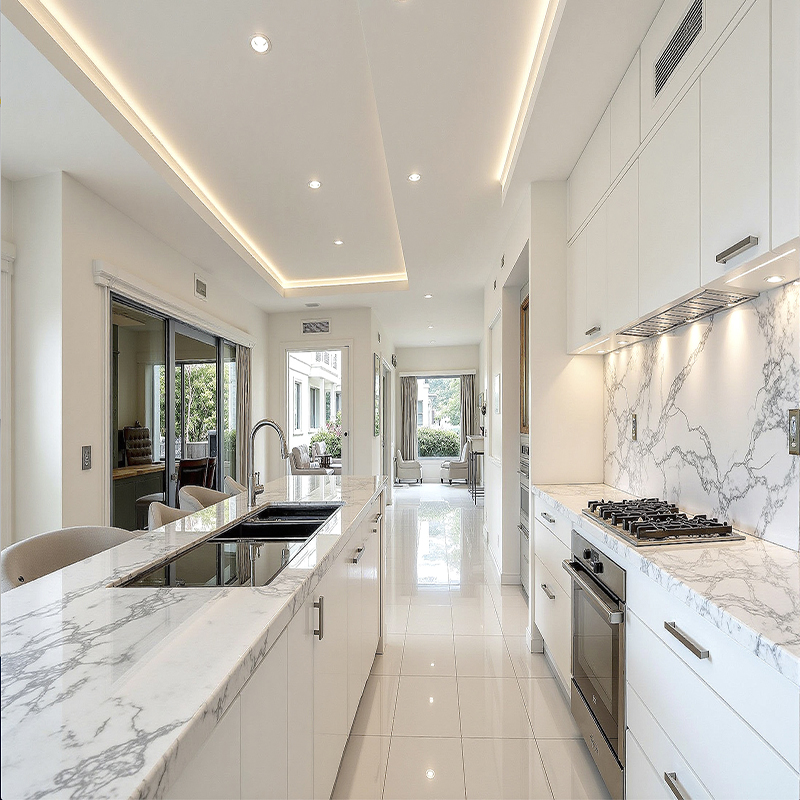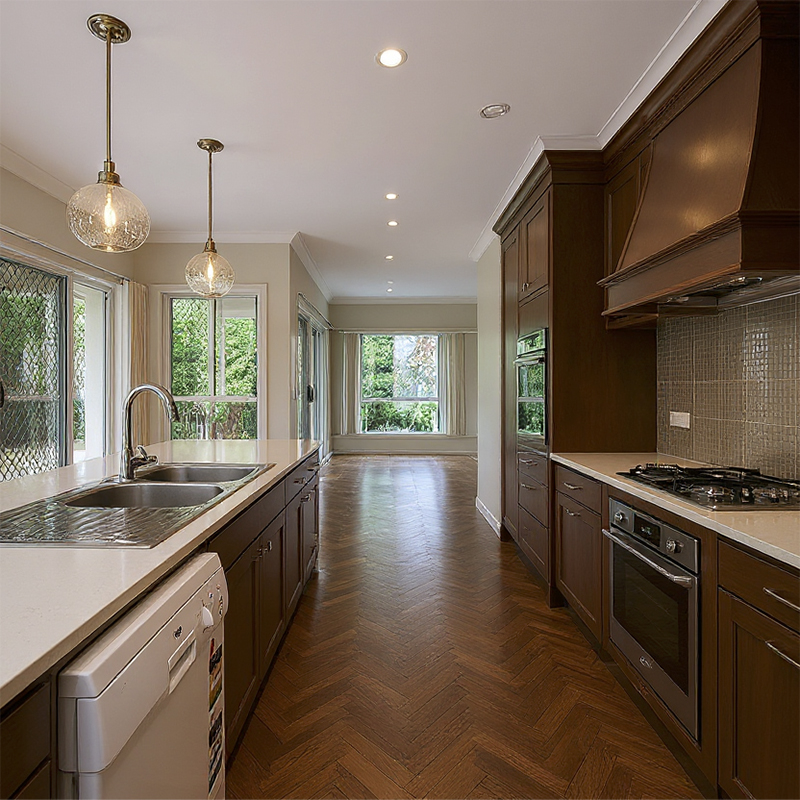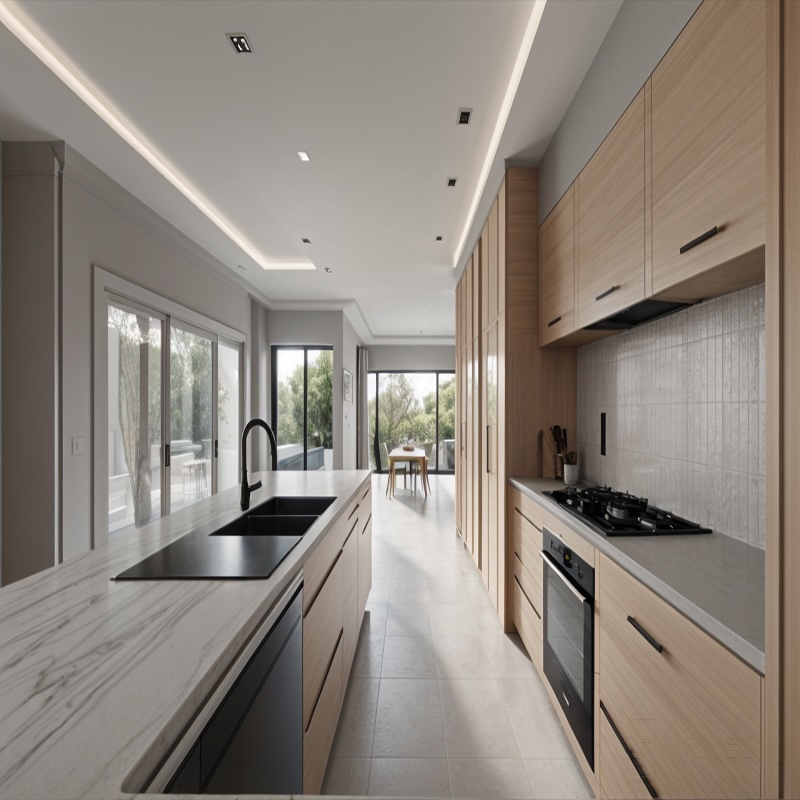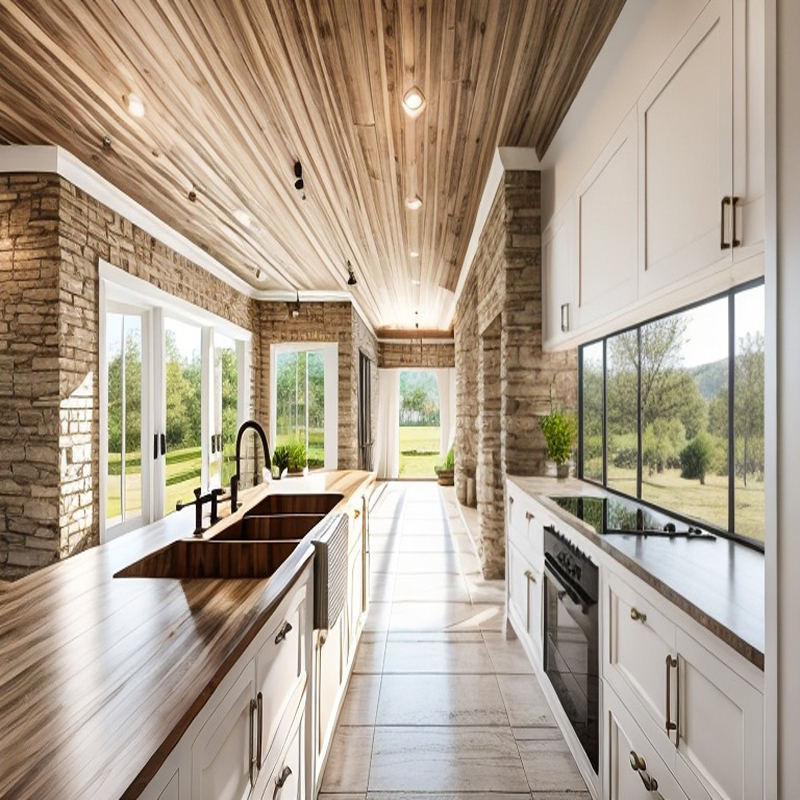
Have you heard about this AI thing?
Artificial intelligence, or AI, has been a major talking point throughout the year and has proved to us that it’s here to stay. This technology can generate human-sounding text with a command, create lifelike images with a click, code a website with a request—and design rooms with a prompt.
“Technology and AI have made layout visualization more accessible than ever,” says Cristina Graff of Graff Guild Architecture & Interior Design in South Orange. Much of that layout is done through “augmented reality.” Gaff explains, “A simple scan from your phone’s camera can generate a rough design plan. From there, a variety of tools let you experiment with layouts based on your goals—for example, many kitchen cabinetry and closet companies now offer intuitive online platforms where you can test different configurations before committing.”
But some programs go even further: They allow you to simply upload an image, tell the computer what you want and watch the results appear before your eyes.
Here’s how the programs work: Upload the image you want to modify, select both the type of room (a kitchen or a living room, for instance) and the style you want (anything from “modern” to “luxury” to “cottagecore” is fair game) and then occasionally give an additional text prompt so it has a little more to go on. Hit generate, and the image appears.
We were curious and decided to test out five of these programs for ourselves. Here’s the image we started out with:

We gave the same or similar prompts and instructions to each program. Here are the results:

DecAI
This program warmed up our original image with lights built into a millwork ceiling, and swapped out the countertops for something that looks like marble or quartzite. It also took the area in the back of the image and turned it into a sitting area with two armchairs chairs, rather than the more logical breakfast nook.
The program did, however, interpret the sliding glass door to the left—which leads outside—as another room, and installed a home office there.

HomeVisualizerAI
Where DecAI went minimal, the modifications are much more obvious with HomeVisualizerAI. The program made the room dark, moody and wood-paneled—and maybe a little too 1990s for our tastes. The dark wood floors in addition to the cabinets and hood make the whole space seem a little stifled.
We’re a fan of the idea of those pendant lights, though, and this design suggestion doesn’t require installing a new backsplash behind the oven and countertop.
If nothing else, this would be a way to rule out specific colors of flooring without the need for samples.

RoomGPT
With gray tiled floors, white oak cabinets and matte black countertops, this is certainly an eye-catching and memorable design idea. It also makes full use of the natural light—in fact, it expands one of the sliding glass doors to take up even more of the wall.
Also of note, this creation completely deleted the room’s dishwasher. It didn’t opt for pendant lights the way HomeVisualizerAI did, and in fact didn’t take lighting into consideration. But this image does illustrate well the way the light cabinets and dark countertops would work together in the space.

SpacelyAI
This program seemed to understand the room’s structure more than the others did—it interpreted all the sliding glass doors correctly, for instance (we don’t hate the black trim in the far back ones, but we would have probably carried it over to the two on the left as well). It generated light wood cabinets, gray countertops and black appliances.
It placed a table and chairs back against the far window for a breakfast nook that feels in line with the layout we have, if a little sparce. It also added millwork and insert photo:ded lights in the ceiling, which warms the space well.

VisualizeAI
Here, we see the bold design choice of using the same wood you used for the countertop and bringing it up onto the ceiling. It also swapped the walls on the left side of the image to open rock and opened the back window in an arch.
One particular change of note: The program reinterpreted the backsplash as a wall of windows. While it would certainly be nice to enjoy that view while cooking, we’re unsure of how architecturally viable that is. Graff says that this is a common problem: “These tools provide a helpful way to visualize possibilities at the earliest stages of planning, but users should be wary that images do not respect scale or structure.”
And, indeed, all of our results make us inclined to agree. “There is no true substitute for working with a trusted professional such as an interior designer or architect” Graff says. “The art of our craft lies in presenting real-world solutions that work for your specifications—and can be both unexpected and sophisticated.”
Want to know everything going on in the design world? Make sure to follow us on Instagram @njhomemag.